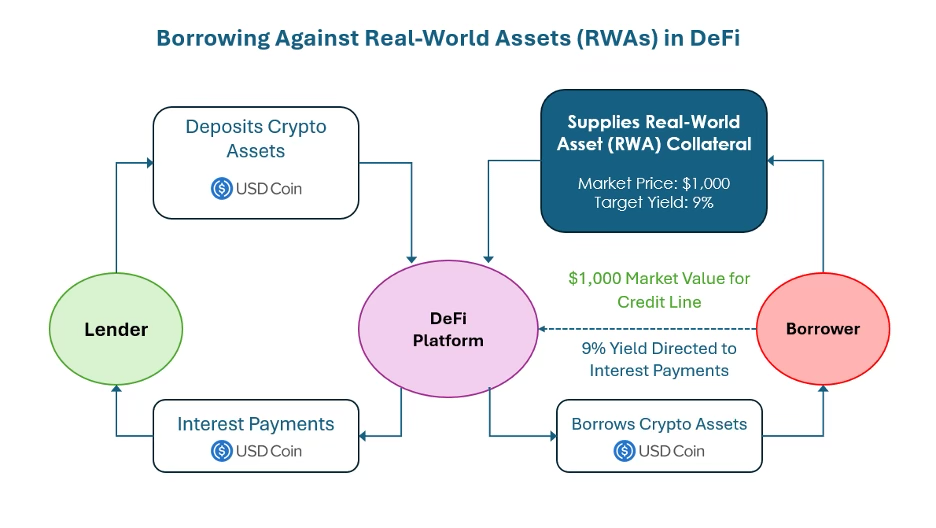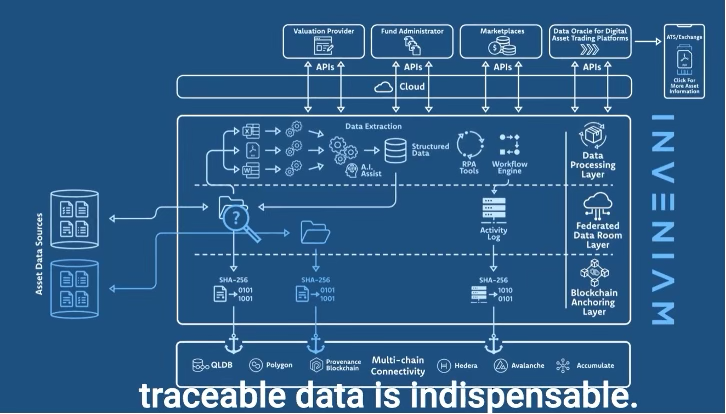The ultimate goals of tokenization include full-fledged secondary trading markets for alternative private assets, integration and portability into the DeFi ecosystem, and greater investment accessibility. While there are a number of platforms and service providers offering tokenization-as-a-service, there have typically been inherent limitations associated with bringing existing legacy assets on-chain in a dynamic manner.
Tokenizing a portfolio of loans from a middle-market direct lender may create an opportunity to use the portfolio collateral as non-crypto collateral within DeFi applications like Moonwell, Aave or Morpho, for example. The ideal real-world asset lending workflow taken from Blue Water’s Opportunities in Tokenization 2025 report is displayed below.

You’re reading Crypto Long & Short, our weekly newsletter featuring insights, news and analysis for the professional investor. Sign up here to get it in your inbox every Wednesday.
Importantly, the concept will likely fail if the direct lender only marks its portfolio holdings quarterly, semi-annually or annually, as that timeline drastically lags the usual real-time execution expected within digital asset markets. To truly unlock the trillions of dollars of current, performing alternative assets in the universe there must be an operating system or systems that enable end-goal applications; these applications include decentralized exchanges, decentralized lending platforms and peer-to-peer collateral transfers from which to constantly draw financial asset data. But doing this for DeFi applications is not feasible by sifting through tens or hundreds of Excel spreadsheets and siloed files in an attempt to ingest asset-level data.
Below are some additional factors for consideration in shifting towards blockchain environments:
1. Transparency and proof-of-metrics — “metric” being anything including reserves, holdings, state, authorization, etc. — are the lifeblood of crypto markets. Bringing legacy assets on-chain in a meaningful way will require above-average levels of transparency, at least for direct investors and participants.
2. Any operational speedbumps inhibiting a 24/7 operating schedule will reduce trust and increase execution risk in the eyes of crypto investors. That means manual employee updates, edits and working hours will decrease the attractiveness of real-world assets to the crypto markets.
3. As a combination of the first two points, seasoned crypto participants will likely require a holistic solution enabling real-time monitoring of the off-chain assets backing their tokens and near real-time execution speed, whether that be trading, subscriptions, redemptions or loan processing.
For example, Inveniam’s blockchain-based operating system displayed here enables private assets to bridge into crypto-native ecosystems that they previously could not.

These points are not as threatening to newly-issued digitally-native assets like Tradable’s $1.7 billion in loans or Figure’s $10+ billion in HELOCs, since the full life cycle and associated data of these products began and still exists on-chain. However, for the trillions of dollars worth of existing assets that many in the field are targeting, porting operating and lifecycle data from an array of Excel sheets to an operating system that can ingest the data, credential it on a blockchain, and ping that data out in real-time will put things at the goal line.
Platforms such as the Inveniam operating system displayed above and Accountable, as well as blockchain layers like Chainlink and Pyth, provide some low-hanging fruit for asset managers and capital markets players to get token-ready by onboarding to blockchain rails.

